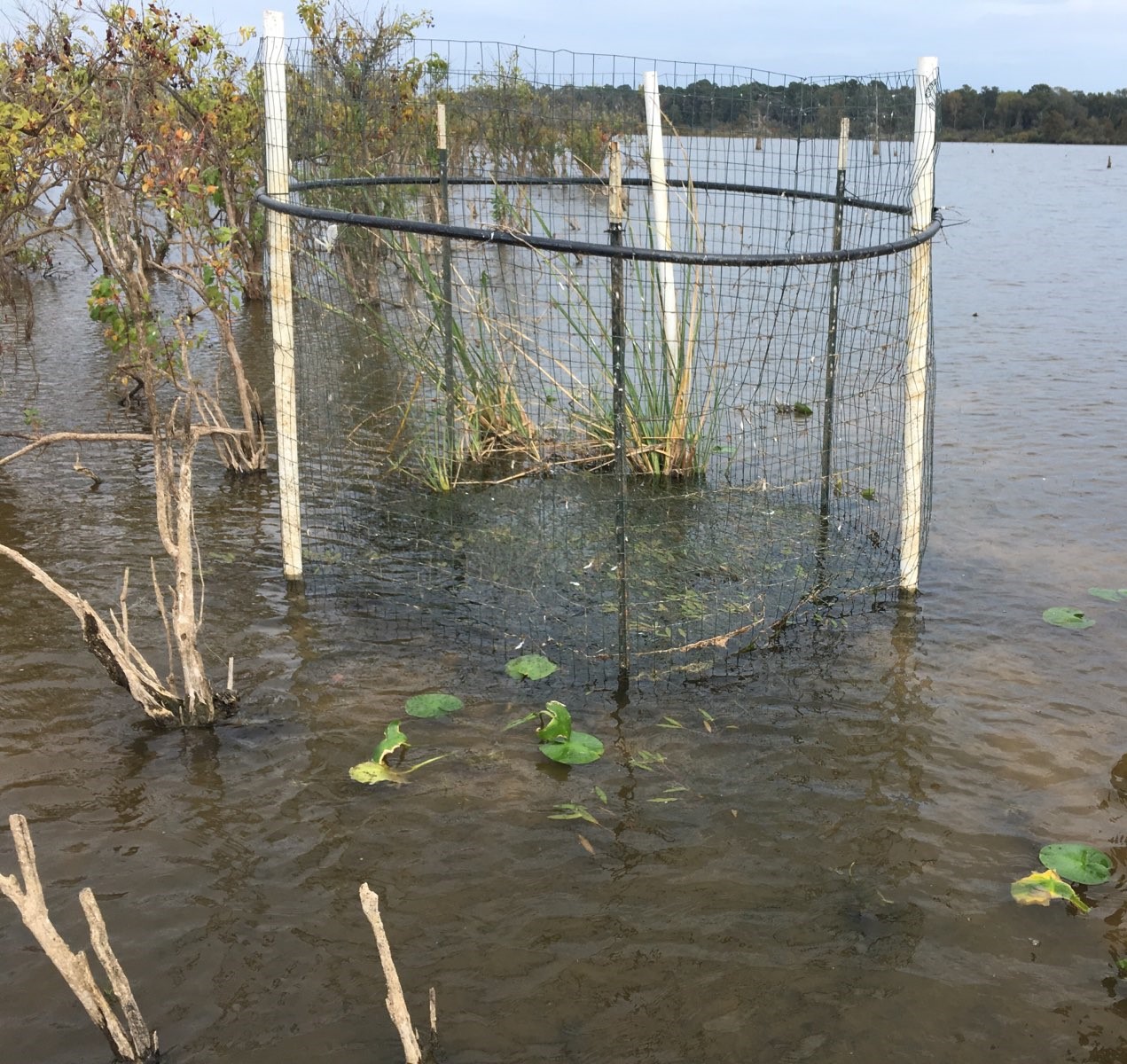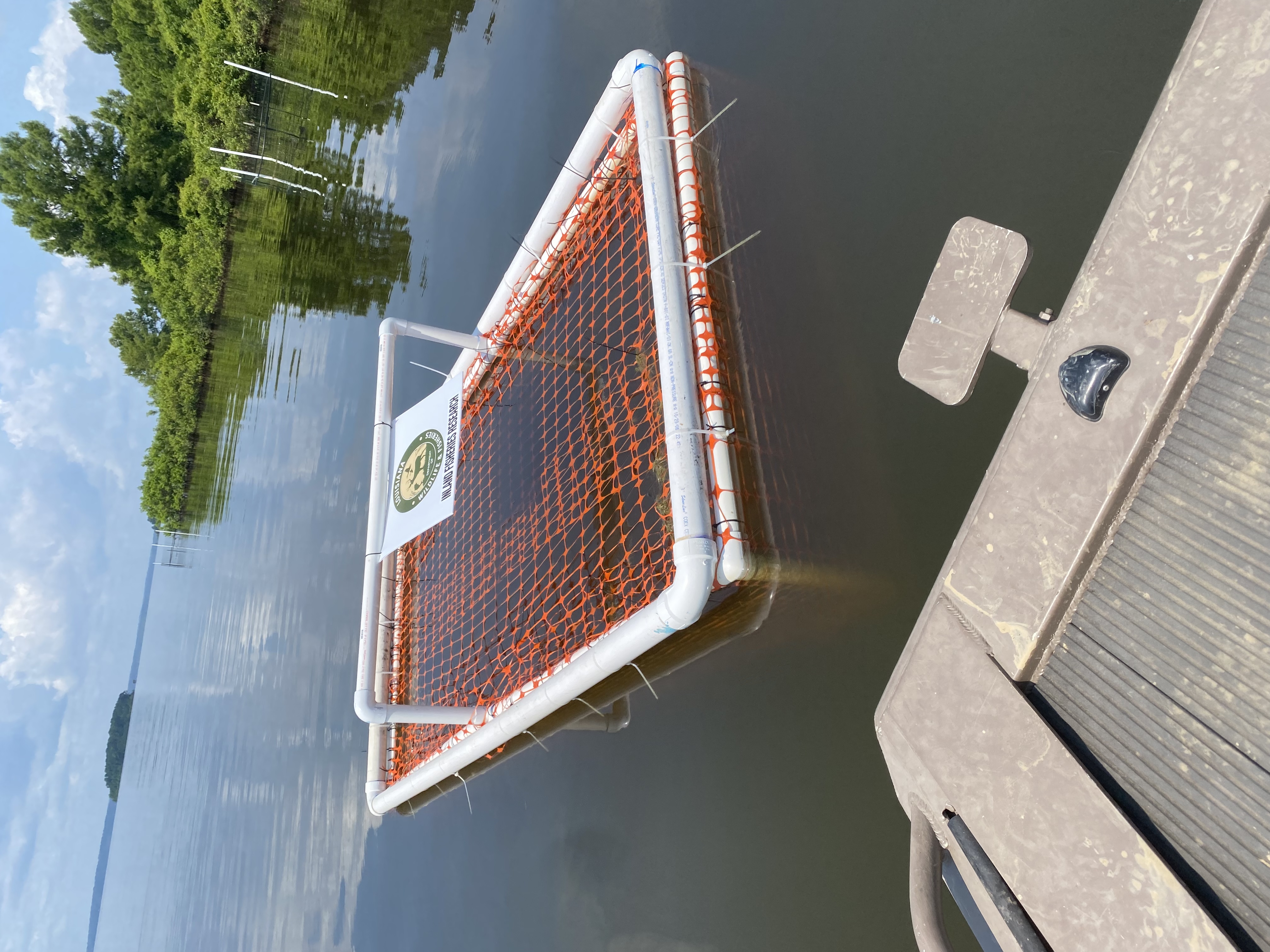LDWF has launched a project to investigate the large decreases of submersed aquatic vegetation at Toledo Bend Reservoir. Vegetation that historically served as beneficial habitat for fish populations in the lake has not recovered following the record floods of 2016 and 2017. Experimental exclosures (structures designed to keep animals out of a designated area), unfenced planting sites, and control plots have been established at three locations – Cow Bayou, Blue Lake and Pirates Cove. dit: Robert Smith ]
These efforts will help to determine if a vegetation seedbank exists in the area, if efforts to re-establish vegetation in the reservoir could be successful in the future, and if plant growth is being suppressed by the grazing habits of herbivores. LDWF biologists will monitor the plots through 2022. The information they collect will be used to develop future strategies to improve fisheries habitat in the reservoir.
Vegetation being planted includes coontail, pondweed and eelgrass. Biologists will investigate these plants’ ability to become established in the reservoir – both in protected and unprotected areas.


Left: This exclosure is designed to keep animals out of a designated area. This will help to determine whether the grazing habits of herbivores are affecting the amount of aquatic vegetation in the Toledo Bend Reservoir.
Right: This floating exclosure is designed to allow coontail to grow and spread seeds that will hopefully be dispersed throughout the area, while protecting it from herbivores.
